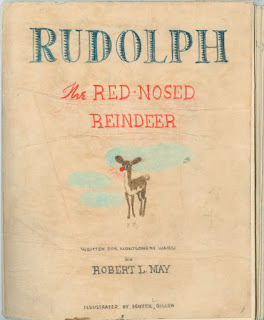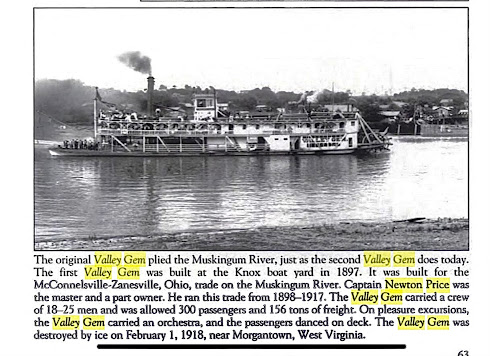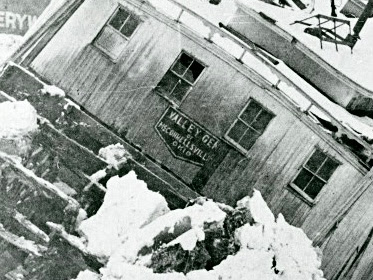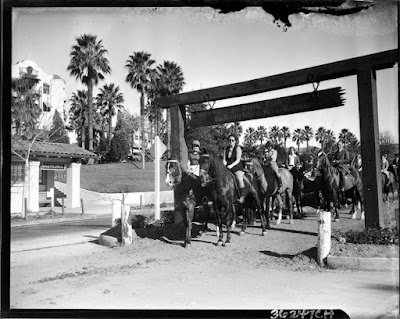You may not know that a prominent movie star, producer, director and industry leader was born in Marietta. I didn’t until I learned about Hobart VanZandt Bosworth. Few people have heard of him, except maybe historians and long time Hollywood residents. That’s because Hobart was active in stage and silent movies in the early 1900’s. He was a prolific actor as well as a producer, director, and movie company owner - including part owner of the early Paramount Pictures studio. This guy was amazing; his own life would make an inspiring and entertaining movie.
Publicity portrait circa 1920
He was born in Marietta in 1867, the son of Daniel P. Bosworth, Jr. and Clara VanZandt Bosworth. He proudly traced his ancestry back to Massachusetts colonists Miles Standish and John and Priscilla Alden on his father’s side, and New York’s Van Zandt family, the first Dutch settlers in the new world, on his mother’s side.
The Bosworth family are descendants of Marietta founder Rufus Putnam. Hobart’s grandfather Daniel P. Bosworth was a prominent Marietta merchant whose name appeared on the Bosworth-Wells building built in 1840 at 155 Front Street. Hobart’s great uncle was Sala Bosworth Jr., a well known Marietta artist. Marietta Times columnist Joan Pritchard noted that because of their lineage “great things were expected of Hobart Bosworth and his younger brother Welles.”
But “great things” often start from humble beginnings. Not much is reported about his early life in Marietta. His mother died when he was 6. His father remarried, but Hobart developed an intense dislike for his step mother. The family lived on Fourth Street; his name appears in 1880 census records. Hobart stated to an interviewer in 1914 that he was “ill-used and cruelly treated” and ran away from home at age 11 to New York City. Yet he later admitted, “I know, now that I can look back dispassionately, that my stepmother really treated me well, better than I deserved.”
His unlikely path to stardom begins at sea, as a cabin boy on the clipper ship SOVEREIGN OF THE SEAS out of New York. He recalls that on his twelfth birthday, the ship was right off Cape Horn. That voyage ended five months later in San Francisco. There were two Marietta connections that he made then. Just after the voyage while sleeping on a park bench near Trinity Church, he remembered hearing organ music from the church. A Captain Roberts told him later that Hobart’s uncle was the organist. Hobart never mentioned his name of if he met him. The same Captain Roberts also told him that Hobart’s grandfather had built the ship MARIETTA* and had sailed her to San Francisco.
He spent three more years at sea, later explaining that "All my people were of the sea and my father was a naval officer." He then worked numerous odd jobs. By age 21, he had worked as a stevedore, miner, a boxer and wrestler, rancher, stage hand, and eventually stage actor. He became an expert horseman as a ranch hand. Love of horses became one of his signature interests later in life.
Another of his lifelong interests was painting. “I was always interested in art,” he said later, “and felt I might make a success as a landscape painter.” On the advice of a friend, he got work as an extra at the California Theater in San Francisco to pay for art instruction. “I suped** and painted,” he said. Life was good.
Landscape Painting by Hobart Bosworth. Setting and time period not known. Bosworth created many works, though few seem to be in the public domain. Viewed at invaluable.com where this painting was offered for sale.
He was given a few bit speaking parts, piquing his interest in acting. Hobart signed on with a touring company and then the Alcazar Theater. By age 21, he had played most of the famous Shakespearean roles, though he admitted “with truth and sorrow, I was the worst exponent of Macbeth the stage has ever known.” An illustrious acting career was underway. And he continued painting, especially later in life, and produced numerous art works.
Bosworth in costume, early in his career. From Wikipedia.org.
His early career featured mind-boggling twists and turns. He moved on from San Francisco - perhaps because he was broke. Bosworth: “I got stranded and took a Denver and Rio Grande train by the underneath route and landed in Park City, Utah.” Underneath route - maybe his term for hitching a ride hobo-style on the train? He worked pushing an ore wagon in a mine to raise money. To escape the mine, he found a job with magician Hermann the Great as an assistant. They toured in Mexico.
During this time, he saw his father for the first time in eleven years; the occasion is not reported. Hobart recalled, “He looked at me and said, ‘Hum! I couldn’t lick you now, son.’” He never saw his father again. There must have been an estrangement. I found nothing further in Hobart’s public comments making reference to his family or his roots in Marietta.
He returned to New York and worked for ten years in theater playing in Shakespeare plays, mostly in minor roles. He finally gained lead roles in Julia Marlowe’s acting company. Just as he was emerging as a star in the New York theater world, he was stricken with Tuberculosis sometime around 1900. He was forced to withdraw from the theater. Tuberculosis (“TB”) was a scourge at the time. There was no known cure; it was often fatal. Rest was thought to be the only way to survive. Hobart rested for a while but soon came back to the theater. He worked harder than ever. “Harrison Gray Fiske featured me in Marta of the Lowlands, and I became a broadway star,” he recounted later. But the end was in sight. He was forced to retire again after losing 70 pounds.
Eventually he moved to the drier climate of Tempe, Arizona. There he did odd jobs, rested, painted, and worked on recovery . “I kept fighting, fighting, fighting,” he exclaimed, “And I won out.” The quote is from an article about Bosworth in Movie Pictorial, a popular movie fan magazine which interviewed Hobart in 1914. He had just started the Jack London*** series of movies. The article was titled “A Jack London Hero: Hobart Bosworth and his Fighting Career.” It began with an overview. “Hobart Bosworth’s life reads like one of the stirring (movie) tales he produces. If there ever was a fighter, he was one....Mr. Bosworth has had to fight that most insidious of all enemies, disease. Again and again, physicians (and those) who knew him have given him up. But he never gave himself up. His passionate will to live has (saved his life and helped him) in achieving success.”
Back to his story: He moved on from Tempe to San Diego which was said to have the best climate in the country. There in 1909 his career received a fortuitous boost: involvement in the fledging movie business. After resurrecting his theater career at the respected Belasco Theater Company in Los Angeles, TB forced him to give up that job. Meanwhile, William Selig, whose Chicago company Selig Polyscope produced short feature films, had set up a makeshift studio in Los Angeles. It is was the first movie studio in California. Francis Boggs, Director of Selig Polyscope, offered Hobart Bosworth the leading role in a short movie. Hobart’s reaction to Boggs’ offer was surprising: “I was heartily indignant,” Hobart recalled. He believed acting in the unproven film medium would be demeaning for an accomplished theater actor. Boggs was persistent, declaring that film-making was an honest and reputable activity. He even offered to withhold Bosworth’s name from the credits. Bosworth’s concern seems amusing now, but then movies were totally new, unproven medium.

Bette Hart and Hobart Bosworth in The Roman made in 1910, one of the very first movies made in Hollywood, from Wikipedia.org
Hobart Bosworth accepted Boggs’ offer and starred in the short film “In the Power of the Sultan,” considered by some as the first movie made in the western U.S. Hobart found the movie-making process awkward and tedious compared to the theater. But soon he was hooked. He realized movies allowed him to continue his passion - acting - in a way that accommodated his tuberculosis limits. Actual filming was done in short bursts with long rests in between. He could work in the open air since movie sets then were outdoors to capture ambient light. And these were silent movies; no speaking was required, so his TB weakened lungs and voice were not a limitation. Bosworth later reflected, “I believe that...motion pictures...saved my life. How could I have lived on and on, without being able to carry out any of my cherished ambitions? What would my life have meant?”
CLICK TO ENLARGE
Montage of Hobart Bosworth images from a Google search. There are hundreds of these in Google search and other sources. During his career, his image appeared in thousands of photos, posters, and movie scenes
Soon he was acting in other movies. Not only that, he was writing and directing many of them. He claims that during his time with Boggs, he wrote 112 films and directed many of them himself. Granted, many of the early films were short, not feature length. Yet this is an example of what impresses me so profoundly about Hobart Bosworth: he was so versatile, creative, and hard working. In this case, he was just learning about acting in the fledgling movie art form. Then he immediately leaped forward to writing screen plays for, and directing, additional movies.
He formed his own production company, Hobart Bosworth Productions Company, in 1913 to produce several films based on Jack London novels. He produced, directed, and acted in most of the films, among them, The Sea Wolf, The Valley of the Moon, and John Barleycorn. In 1916 Bosworth’s company was absorbed in to the famous Paramount Studios. He remained a part owner of Paramount for a time, along with early movie moguls such as Jesse Lasky, Samuel Goldwyn, and Cecil B. DeMille. Bosworth Productions Company and it’s successors produced 31 films, most of which starred Bosworth.
Publicity booklet for The Sea Wolf, produced by Bosworth’s production company in 1913, viewed at abebooks.com
After he sold to Paramount, his leadership role in the movie industry faded. His health may have been a factor in this change. Plus, he was in his fifties by then. From the late 1910’s, he transitioned to acting only - usually in supporting roles, often as prominent characters in secondary “B” movies. But he kept active, appearing in dozens of movies through the 1920’s He was often cast as a fatherly type in roles like governors, clergymen, fathers, sheriffs, and judges. His roles over his career were phenomenal in variety: Jack London and Shakespearean characters, Kit Carson, George Washington, Braveheart, Robert E. Lee, Wizard of Oz, Jesus Christ, Spanish Explorer Cortez, Davy Crockett, Dr. Jekyll/Mr. Hyde, Kaiser Wilhelm. He played cowboys, Indians, royalty, explorers, sea captains, politicians, soldiers - often with elaborate costumes.

Hobart Bosworth as Jesus Christ in Business is Business (1915) and a clergyman in The Scarlet Sin (1915). Viewed at whosdatingwho.com. It is bizarre that these photos showed up on a dating website, announcing that “Hobart Bosworth is possibly single.”
He made the transition to talking pictures, and his voice recovered. His later roles in the 1930’s were often cameo roles or bit parts, probably due limited demands for an actor over age 60. But he kept at it. His last film appearance was in 1942, the year before his death.
Bosworth became a fixture in Beverly Hills. He was active in the community and built his “dream home” on Hillcrest Road. Bosworth was known for riding his horse Cameo around town and talking to everyone. He helped fund construction of the Beverly Hills equestrian trail which ran along the median on Sunset Boulevard. It opened in 1926; Hobart served on the trail’s board.
Grand opening of the Beverly Hills equestrian trail in 1926
He was active in civic groups and good friends with neighbor Will Rogers. He was affectionately called the “Dean of Hollywood” for his pioneering role in the movie industry. Hobart Bosworth was honored with a star on the Hollywood Walk of Fame at 6522 Hollywood Boulevard.
Photos of Hobart with his horse and autograph message (above) and at his “dream home” on Hillcrest Road in Beverly Hills (below)
Bosworth was a prodigious actor, director, and producer. He is credited with appearances in over 250 movies from 1908 to 1942, directing 44 from 1911 to 1915, writing screenplays for 27, and producing 11 movies from 1911 to 1921. His actual count might be many more. And that was after a stage career that spanned nearly 20 years. How many movie stars of today can cite numbers like that? He certainly passed the “great expectations” test predicted from the accomplishments of his Marietta ancestors. Hobart VanZandt Bosworth truly was a star.
Walk of Fame star on Hollywood Boulevard
*Without further information, it is hard to verify this statement and identify which MARIETTA vessel it might have been. There were several.
** A supernumerary (“supe”) was a theater extra - a person with a nonspeaking role or part of a crowd.
***Jack London was a popular author of rugged adventure stories published in the early 1900’s. Hobart Bosworth was a pioneer in introducing well known novels to the movie screen.






























